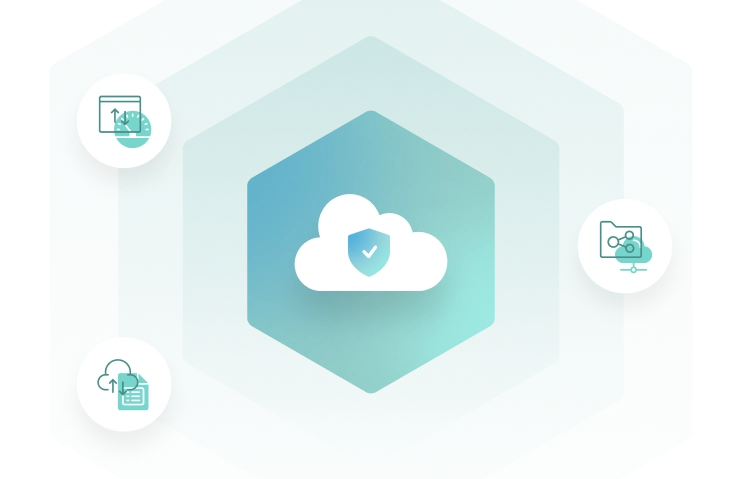Data Stewardship: Roles, Benefits, and Best Practices
Your enterprise holds a wealth of data, but without proper governance, much of its potential remains unrealized. Disconnected oversight and inconsistent data quality continue to cost organizations time, money, and trust. This is no longer a back-office issue. Gartner projects that by 2027, 60% of organizations will underperform on key business outcomes due to weak data governance. That kind of gap puts competitiveness at risk.
Data stewardship provides the foundation for turning raw data into reliable, strategic insight. It ensures information is accurate, accessible, and compliant across systems. More than a checkbox, stewardship is an ongoing commitment to maintaining and improving data integrity throughout the organization.
By clearly defining ownership, enforcing governance standards, and promoting data management collaboration across teams, businesses can turn scattered data into consistent intelligence. The result is smarter decision-making, greater operational efficiency, and a clear path to long-term resilience.
Let’s jump in and learn:
Roles and Responsibilities of Data Stewards
At its core, data stewardship bridges the gap between strategic goals and day-to-day data operations by assigning clear responsibilities to data stewards across departments.
A strong data stewardship model outlines roles and enforces policies that uphold data integrity throughout its lifecycle. These responsibilities typically include:
- Defining and enforcing data quality standards that align with enterprise policies.
- Monitoring data usage and integrity across systems to ensure consistency.
- Resolving data issues by collaborating with owners, analysts, and IT teams.
- Documenting metadata to ensure transparency and ease of access.
- Implementing data stewardship policies that align with regulatory and business requirements.
- Facilitating training and awareness on proper data handling practices.
- Collaborating with data owners to clarify data ownership vs stewardship responsibilities.
Depending on business complexity, there may be different types of data stewards, such as business stewards, technical stewards, and operational stewards, each tasked with specific governance duties aligned to their domain expertise.
Why Data Stewards Are Critical for Governance
Data stewards function as the critical bridge between raw information and strategic business value. The data steward approach emphasizes accountability and ownership rather than passive maintenance. Stewards actively champion data initiatives, evangelize best practices, and ensure that information assets support business objectives.
Organizations without dedicated stewards typically experience fragmented data landscapes, inconsistent quality standards, and reactive problem-solving approaches. These limitations compound over time, creating technical debt that becomes increasingly expensive to remediate as data volumes grow.
Building Effective Data Stewardship Programs
Successful data stewardship programs require structured frameworks that define roles, establish processes, and measure outcomes. The data stewardship model should align with organizational maturity levels while providing clear pathways for continuous improvement and scalability.
Data Stewardship Program Lifecycle
- Discovery Phase: Identify and catalog all data assets
- Assessment Phase: Evaluate quality, risks, and compliance gaps
- Design Phase: Create governance frameworks and policies
- Implementation Phase: Deploy tools and train stewardship teams
- Monitoring Phase: Track metrics and optimize processes
- Improvement Phase: Enhance capabilities based on results
Essential Data Stewardship Activities for Governance
Here are some common data stewardship activities carried out to maintain data quality and governance across an organization:
Data quality monitoring: Ensures accuracy, completeness, and consistency of data
Metadata management: Maintains clear context and lineage of data across systems
Policy enforcement: Applies data stewardship policies for compliance and standardization
Data classification and tagging: Organizes data for better governance and access control
Issue resolution and data cleansing: Identifies and fixes inconsistencies or errors in data
Stewardship reporting: Tracks stewardship effectiveness and highlights data governance metrics
Role-based access oversight: Ensures appropriate access rights across users and departments
Collaboration with data owners: Aligns on data ownership vs stewardship responsibilities
The Data Steward: A Digital Data Guidance
Modern enterprises generate and store data across dozens of systems, making governance more complex than ever. This is where the data steward steps in, serving as both a record keeper and a strategic enforcer of data trust. Think of them as the digital data sheriff: They ensure that data is accurate, properly classified, securely shared, and fully compliant with internal and external policies.
But policy alone is not enough. Execution demands the right tools.
How Egnyte Supports Data Stewardship
Data stewardship is only as effective as the tools that support it. While policies and roles define the framework, platforms like Egnyte enable real execution at scale.
Egnyte enables organizations to operationalize data stewardship through a governance framework that centralizes control over unstructured content. By embedding policy enforcement directly into everyday workflows, Egnyte empowers data stewards to move beyond passive oversight and take an active role in managing compliance, privacy, and data quality. It provides unified visibility across repositories, applies automated classification and retention policies, and enforces access controls at scale.
Case Study
How Egnyte Helps a Healthcare System Automate Data Governance
A major healthcare network struggled with disparate data systems across multiple facilities, creating compliance risks and hindering patient care coordination. Manual data quality processes couldn't scale with their growth, leaving critical information gaps that impacted operational efficiency.
By implementing Egnyte's enterprise data governance platform, the healthcare system automated data discovery, classification, and quality monitoring across all facilities. The integrated stewardship tools enabled the organization to:
- Reduce data quality issue resolution time by 75% through automated detection and workflow management
- Achieve 99.2% compliance score on regulatory audits through comprehensive data lineage tracking
- Decrease manual data processing overhead by 60% while improving accuracy and consistency
- Enable real-time patient data access across facilities, improving care coordination and outcomes
This transformation positioned the healthcare system as a leader in data-driven patient care while significantly reducing compliance risks and operational costs.
Read the full case study here.
As the volume and complexity of information grow, so does the risk of poor data quality, non-compliance, and missed opportunities. A robust data stewardship model transforms fragmented datasets into trusted assets that fuel intelligent decisions and regulatory confidence.
With role-based dashboards tailored to different types of data stewards, Egnyte makes stewardship a measurable, enterprise-wide function, aligning governance with business agility.
Frequently Asked Questions
Q. What is an example of a data steward?
A data steward is typically a business analyst in the finance department who ensures customer transaction data meets quality standards for regulatory reporting. They monitor data accuracy, resolve discrepancies, and coordinate with IT teams to maintain compliance with financial regulations.
Q. What is the responsibility of data stewardship?
Data stewardship responsibilities include establishing data quality standards, monitoring compliance with governance policies, resolving data-related issues, and facilitating communication between technical and business teams to ensure information assets support organizational objectives effectively.
Q. What is the role of APN in data stewardship?
APN (Application Performance Network) monitoring provides data stewards with visibility into how applications handle data processing, enabling them to identify performance bottlenecks and quality issues that could impact stewardship effectiveness and business operations.
Q. What is the data steward approach?
The data stewardship definition centers on proactive accountability for data quality. Unlike data ownership vs stewardship, where owners control access, stewards focus on accuracy, governance, and aligning data with business goals.
Q. What is fair data stewardship?
Fair data stewardship ensures that data governance practices balance stakeholder needs while maintaining ethical standards. It involves transparent policies, equitable access controls, and consistent application of quality standards that serve both business objectives and broader societal interests.
Additional Resources

Data Governance Framework: Four Pillars for Success
A concise guide to building a scalable, business-aligned data governance strategy that grows with your organization

Understanding Data Governance
A beginner-friendly overview of data governance and its role in building secure, compliant, and efficient data ...

How to Choose the Right Data Governance Tool
An easy-to-follow guide covering core features, automation benefits, compliance needs, and questions that help you compare ...